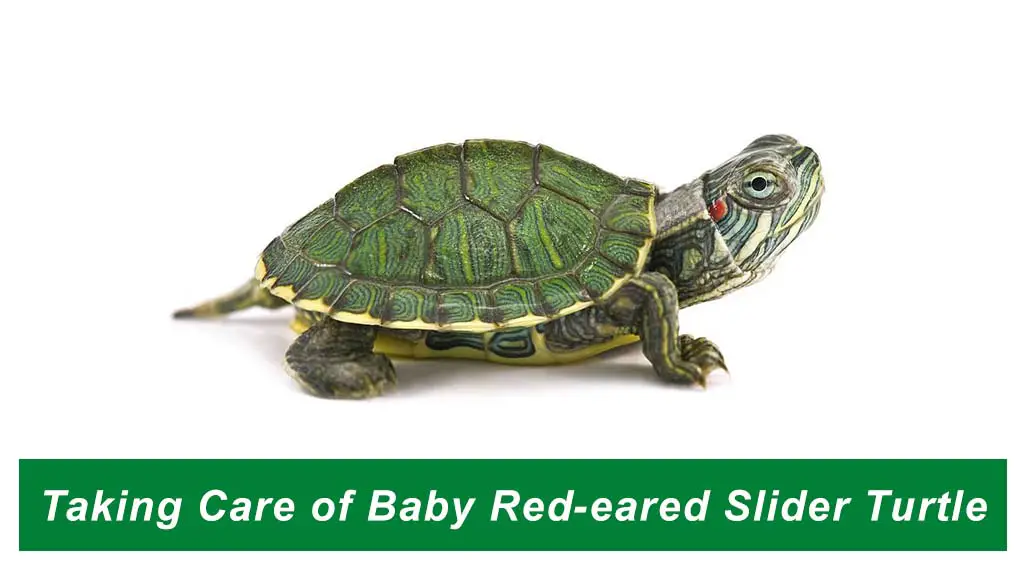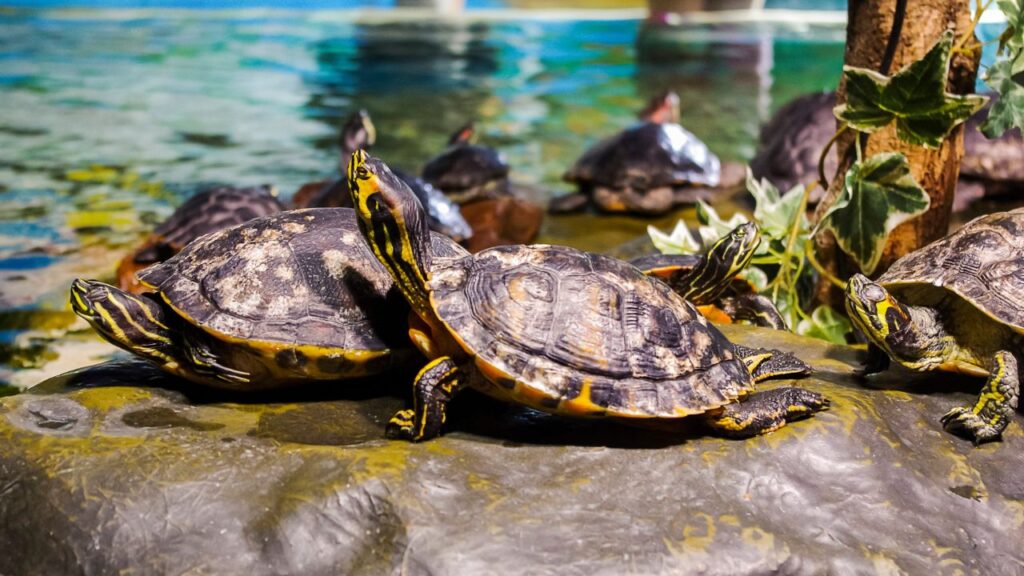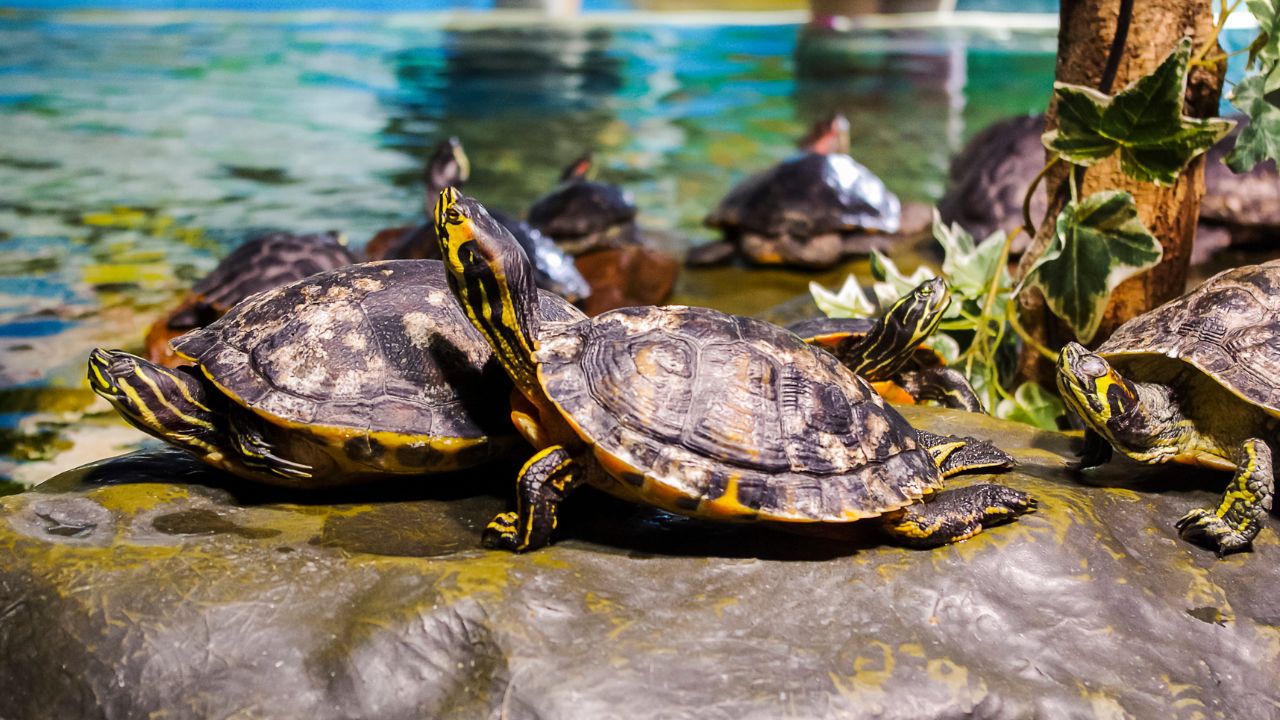So you just got yourself a baby turtle, huh? Well, let me tell you, these little guys require some special care. One crucial aspect of their well-being is providing them with enough basking time. You see, basking is not just a way for them to soak up some sun and relax; it’s essential for their thermoregulation. Baby turtles rely on external sources of heat to regulate their body temperature, and basking allows them to do just that. By exposing themselves to sunlight or heat lamps, they can raise their body temperature and remain active and healthy. So if you want your little shelled friend to thrive, make sure to give them adequate basking time.

Understanding Baby Turtles’ Thermoregulation
Baby turtles, like all reptiles, rely on external sources of heat to regulate their body temperature. Unlike mammals, reptiles are ectothermic, which means they cannot internally regulate their body temperature. Instead, they depend on their surroundings to maintain the optimal temperature for their bodily functions.
Body Temperature Regulation in Reptiles
Thermoregulation in reptiles is a vital process that ensures their survival and overall well-being. By utilizing a combination of behavior and external heat sources, reptiles are able to maintain their body temperature within a narrow range, which is essential for their metabolism, digestion, growth, and other physiological processes.
Importance of Thermoregulation for Baby Turtles
For baby turtles, thermoregulation is even more crucial than it is for their adult counterparts. Baby turtles have higher metabolic rates and are more susceptible to temperature fluctuations. Their ability to grow, develop, and thrive depends heavily on their ability to maintain a suitable body temperature.
The Role of Basking Time in Thermoregulation
Definition of Basking Time
Basking time refers to the period during which a turtle exposes itself to external heat sources, such as the sun or a heat lamp. Basking allows the turtle to raise its body temperature, regulate its metabolism, and absorb essential nutrients, such as Vitamin D, which is necessary for the absorption of calcium.
Why Basking Time is Important for Baby Turtles’ Thermoregulation
For baby turtles, basking time is especially important because it helps them maintain an optimal body temperature. Basking provides the necessary heat that allows their bodies to function properly and efficiently. It helps them digest their food, assimilate nutrients, and grow at a healthy rate.
Basking also plays a vital role in the development of a baby turtle’s immune system. Exposure to sunlight or a suitable heat source stimulates the production of Vitamin D, which enhances the turtle’s immune response and helps protect it from infections and diseases.
Factors Affecting Adequate Basking Time
Several factors can influence the duration and effectiveness of a baby turtle’s basking time. Understanding and addressing these factors is essential for ensuring the turtle’s thermoregulation needs are met.
1. Ambient Temperature
The ambient temperature in the turtle’s environment plays a significant role in its basking behavior. If the ambient temperature is too low, the turtle may not be able to raise its body temperature adequately. On the other hand, if the ambient temperature is too high, the turtle may struggle to cool down, which can lead to overheating.
2. Availability of Heat Sources
The availability and accessibility of suitable heat sources are crucial for baby turtles’ thermoregulation. Whether it’s natural sunlight or artificial heat lamps, baby turtles need a reliable and consistent heat source that mimics their natural environment. Insufficient or unreliable heat sources can negatively impact the turtle’s basking behavior and overall health.
3. Enclosure Design
The design of the turtle’s enclosure also plays a significant role in its basking routine. The enclosure should provide a designated basking area that allows the turtle to easily access the heat source and regulate its body temperature. It should be spacious enough for the baby turtle to move around comfortably and simulate natural basking behaviors.
4. Access to Water
Water plays a crucial role in a baby turtle’s basking routine. Turtles need to have access to both land and water to maintain optimum thermoregulation. Having a shallow water area in the enclosure allows the turtle to cool down and regulate its body temperature as needed.
5. Behavioral Patterns
Each baby turtle has unique behavioral patterns when it comes to basking. Some turtles may prefer basking in the morning, while others may prefer the afternoon. It is important to observe and understand the baby turtle’s individual preferences and provide basking opportunities accordingly.
Consequences of Insufficient Basking Time
Insufficient basking time can have detrimental effects on a baby turtle’s health and well-being. Failing to provide adequate basking opportunities can lead to various problems, both physiological and behavioral.
1. Impact on Growth and Development
Without sufficient basking time, baby turtles may experience stunted growth and developmental delays. Basking helps them absorb essential nutrients, such as calcium, which is crucial for their bone and shell development. Lack of proper basking can result in weak shells, deformed limbs, and overall poor growth.
2. Weakened Immune System and Health Issues
A compromised immune system can make baby turtles more susceptible to infections and diseases. Basking time stimulates the production of Vitamin D, which enhances the immune response and helps fight off pathogens. Insufficient basking can weaken the turtle’s immune system, making it more vulnerable to illnesses.
3. Metabolic and Digestive Problems
Thermoregulation is closely tied to a baby turtle’s metabolism and digestion. Inadequate basking can disrupt these processes, leading to metabolic imbalances and digestive issues. The turtle may struggle to digest its food properly, leading to malnutrition and a host of other health problems.
4. Behavioral Abnormalities
Baby turtles that do not receive enough basking time may exhibit abnormal behaviors. They may become lethargic, less active, and show signs of stress. In some cases, they may even become agitated or aggressive. These behavioral abnormalities are a clear indication of the turtle’s dissatisfaction and discomfort.

Establishing an Optimal Basking Routine
Creating an optimal basking routine is essential to ensure the well-being of baby turtles. By following these guidelines, turtle owners can provide their baby turtles with the necessary thermoregulation opportunities.
1. Evaluating the Specific Needs of Baby Turtles
Each baby turtle species has its specific requirements for basking. It is crucial to research and understand the specific needs of your baby turtle species to provide the optimal basking conditions. Factors such as preferred basking temperature, basking duration, and frequency should be taken into consideration.
2. Providing a Suitable Basking Area
The enclosure should have a designated basking area that allows the turtles to easily access the heat source. This area should be spacious, clean, and properly designed to mimic the turtle’s natural environment. It is important to provide a variety of basking spots, including different temperature gradients, to cater to the turtle’s individual preferences.
3. Monitoring and Adjusting Basking Time
Regular monitoring of the turtle’s basking behaviors is crucial to ensure that it is receiving adequate basking time. Observing the turtle’s activity levels, body posture, and basking duration can help determine if any adjustments need to be made. If the turtle consistently avoids basking, it may be a sign of discomfort or an inadequate heat source.
4. Encouraging Natural Behaviors
Creating an enriched environment that allows the baby turtle to exhibit natural behaviors is essential. Providing branches, rocks, and other structures that encourage climbing and basking behaviors can enhance the overall basking experience of the turtle. Simulating a naturalistic environment can also help alleviate stress and promote overall well-being.
Educating Turtle Owners about Basking Importance
Educating turtle owners about the importance of basking time is crucial for the well-being of baby turtles. By raising awareness and sharing relevant information, turtle owners can make informed decisions and provide the best care for their turtles.
1. Raising Awareness about Thermoregulation
Many turtle owners may not be aware of the significance of basking time for their baby turtles. By educating them about the natural behavior and needs of turtles, they can better understand why providing adequate basking time is essential for their pet’s health and well-being.
2. Sharing Tips for Proper Basking Time Management
Sharing practical tips and guidelines can help turtle owners establish and maintain a proper basking routine. Tips such as setting up a suitable heat source, monitoring basking behaviors, and creating a comfortable basking area can ensure that turtle owners are equipped with the necessary knowledge to meet their baby turtles’ thermoregulation needs.

Addressing Common Misconceptions
There are several common misconceptions about basking time for baby turtles. Dispelling these myths is crucial for ensuring the well-being of baby turtles and providing them with proper care.
1. Myth: Baby Turtles Don’t Require Basking Time
Contrary to popular belief, baby turtles do require basking time to regulate their body temperature and overall health. Basking is an essential aspect of their natural behavior and physiological processes.
2. Myth: Basking Time Should Be Limited
Basking time should not be limited for baby turtles. They need regular access to heat sources to maintain their metabolism, growth, and immune system. Restricting basking time can lead to various health issues and developmental problems.
3. Myth: Artificial Heat Sources Can Replace Natural Basking
While artificial heat sources can supplement and provide additional heat, they cannot fully replace natural basking. Natural sunlight provides essential UVB rays that are crucial for the synthesis of Vitamin D, which artificial heat sources may not provide in sufficient quantities.
Challenges in Providing Adequate Basking Time
There are several challenges that turtle owners may face when trying to provide adequate basking time for their baby turtles. Being aware of these challenges and finding suitable solutions is key to ensuring proper thermoregulation for the turtles.
1. Lack of Knowledge and Understanding
One of the main challenges is a lack of knowledge and understanding about baby turtle’s thermoregulation needs. Many turtle owners may not be aware of the importance of basking time or how to provide it effectively. Education and information dissemination can help overcome this challenge.
2. Limited Availability of Suitable Enclosures
Finding suitable enclosures that cater to the specific needs of baby turtles can be challenging. Many commercially available enclosures may not provide adequate space or suitable basking areas. Custom-made enclosures or modifications may be necessary to meet the baby turtles’ requirements.
3. Inconsistency in Monitoring and Maintenance
Consistency is key when it comes to providing adequate basking time. Many turtle owners may struggle to consistently monitor and maintain the basking environment due to various reasons. Finding ways to simplify and streamline the monitoring and maintenance process can help overcome this challenge.

Conclusion
Providing adequate basking time is crucial for the well-being and overall health of baby turtles. Through careful understanding of their thermoregulation needs, creating suitable basking areas, and educating turtle owners about the importance of basking, we can ensure that baby turtles thrive in captivity. By addressing misconceptions, overcoming challenges, and promoting proper basking time management, we can contribute to the long and healthy lives of these fascinating creatures.
